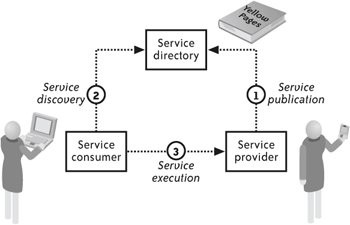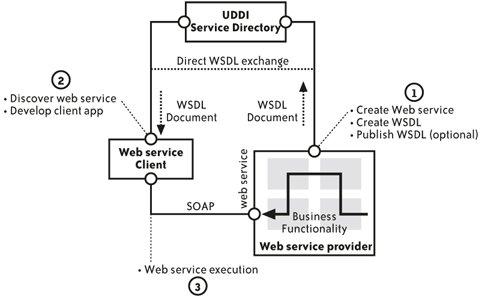Section 14.6. What are the main components of web services?
14.6. What are the main components of web services?The easiest way to understand the main components of web services, which are providers, directories, and consumers, is to think about a real-world example. You can think of nearly everything a business does as a service. What do you do if you are looking for a service, such as auto repair? You look it up in a service directory, such as the Yellow Pages. You as the potential service consumer look in a directory for a service provider. Using the information in the directory (in this case, a phone number), you then contact the provider, who performs the service you requested, as shown in Figure 14-3. Figure 14-3. Web services mirroring real-world services If you think of what happens step by step, first the service provider publishes business information in the directory, then you find or discover the service, you contact the provider, and the provider executes the service for you. Web services mirror this structure. A provider of a web service writes a service or exposes functionality as a service (the service itself may be written in any language) and then writes a description of that service in the Web Services Description Language (WSDL). The WSDL might be passed directly to a business partner, or it could be published in a UDDI directory. The web services consumer uses the WSDL description to either construct or configure a client, depending on the nature of the service. Now it is time to execute the service. The client and the server must translate their programmatic calls into SOAP messages that handle the execution. Figure 14-4 shows this process. Figure 14-4. Basic web services components Although conceptually it is clear what each web services standard is doing, let's examine the main web services standards in more detail now, starting with the standard that underpins the web services standards: XML. |
EAN: 2147483647
Pages: 265